Our focus on sustainability
At Yarra Trams, sustainability encompasses the social, environmental and economic factors that contribute to a sustainable future for the tram network. By taking a triple bottom line approach, we secure long-term value for our people, passengers, partners, the communities we serve and for the environment. Read our Sustainability and Environment Policy.
Yarra Trams is proud to be certified to the ISO 14001:2015 standard to ensure we achieve the intended outcomes of our environmental management system, which provides value for the environment and the organisation.
Sustainability highlights
Urban Arbours
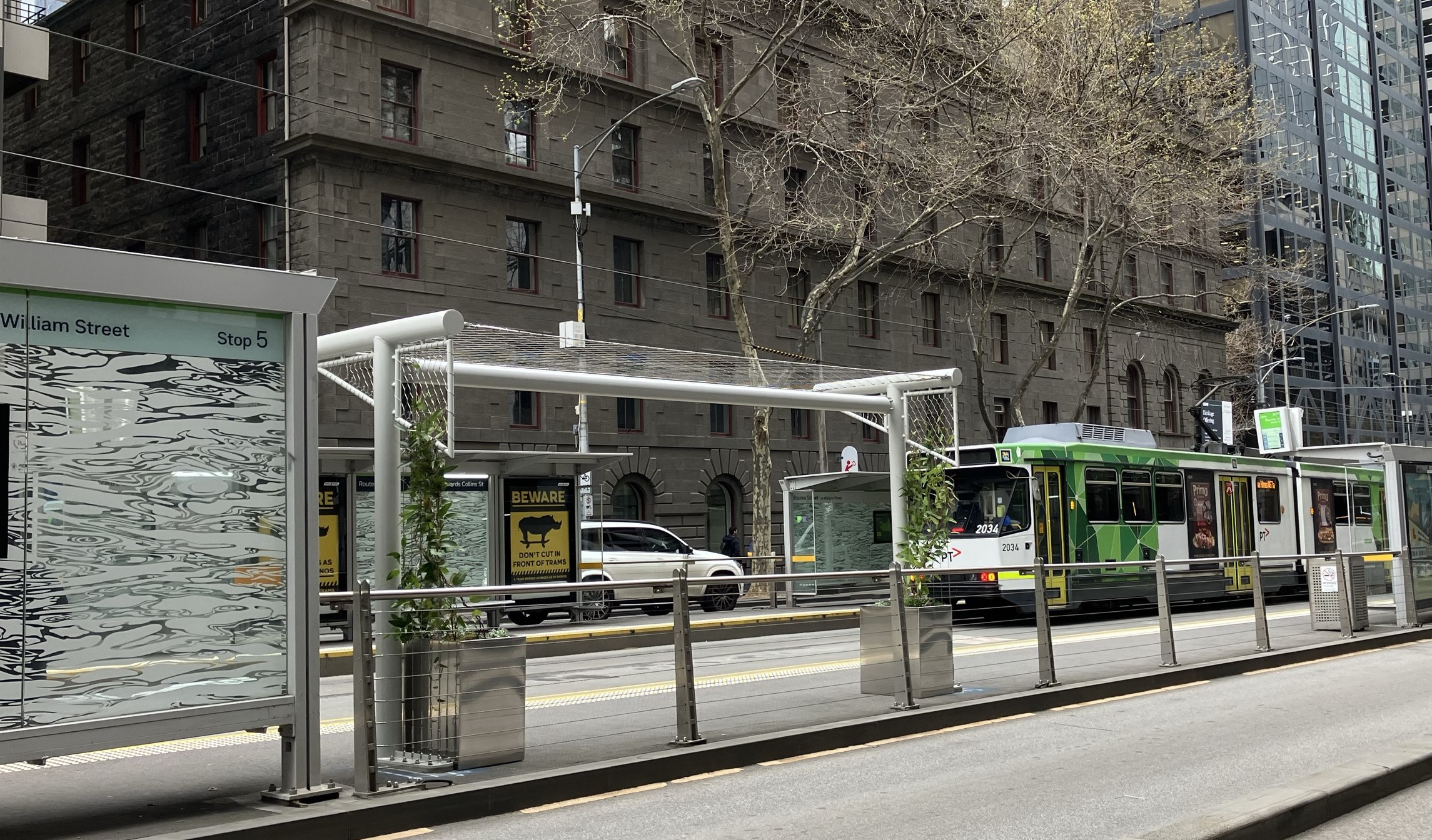
Our Melbourne first urban arbours have started to roll out at tram stops across the city, providing shade and greenery and improving travel experience for our passengers ahead of the warmer months.
This pilot program aims to help reduce the impact of urban heat and increase shade by developing mini ecosystems at tram platforms. Urban Arbours aim to reduce graffiti and improve air pollution, creating healthier and safer environments for tram passengers travelling through the CBD.
You’ll find the new Urban Arbours at the Bourke Street/William Street, Bourke Street/Elizabeth Street, Batman Park/Spencer Street and Royal Children’s Hospital/Flemington Road tram stops.
Yarra Trams received grant funding for this project through the City of Melbourne's Urban Forest Fund: http://www.melbourne.vic.gov.au/urbanforestfund
Greening our depots

We are continuing work to improve the environmental footprint of our depots.
In 2021, we delivered more energy efficient lighting by removing all fluorescent light fixtures and installing LED lighting to our tram stabling and maintenance sheds at Southbank, Glenhuntly, Malvern and Brunswick depots.
In 2022, as part of the Greener Government Buildings Program, we began to roll out further LED upgrades, skylights to maximise natural lighting and solar systems to generate renewable energy. More than 800 solar panels have been installed across our depots. Combined, the depot systems are capable of generating more than 500 megawatt-hours of electricity a year.
End of year giving appeal
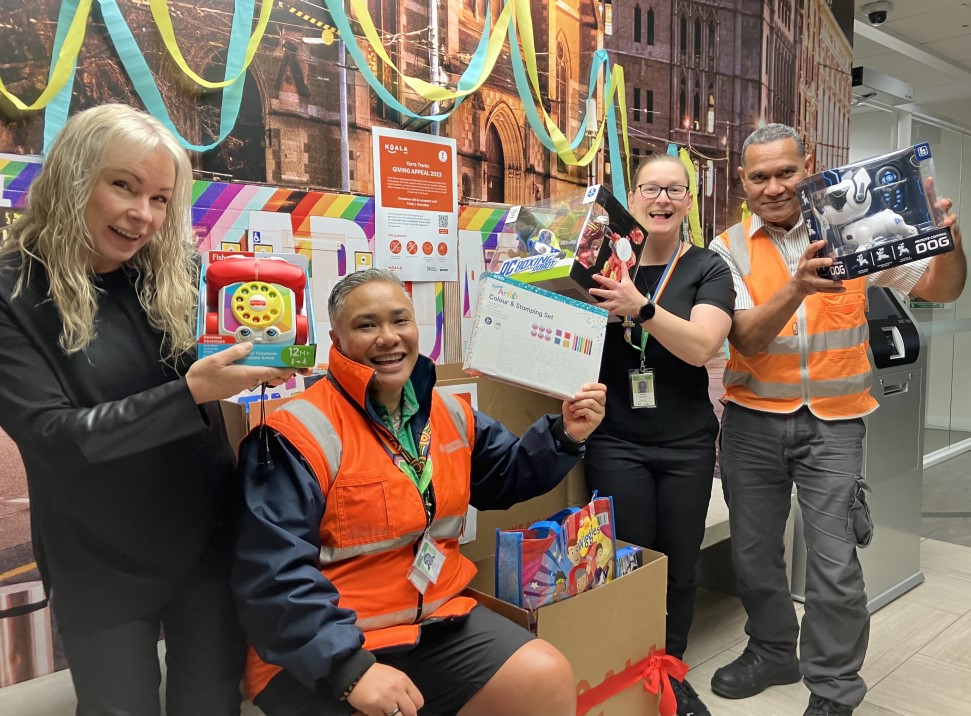
As part of our annual End-of-Year Giving Appeal, Yarra Trams' employees supported the toy drive of local community organisation, Koala Kids. This campaign aimed to bring joy to children and young people with cancer and other chronic illnesses.
Other End-of-Year Giving Appeal community partners have included FareShare, Asylum Seeker Resource Centre, FoodBank Victoria and OzHarvest.
Greening our passenger vehicles
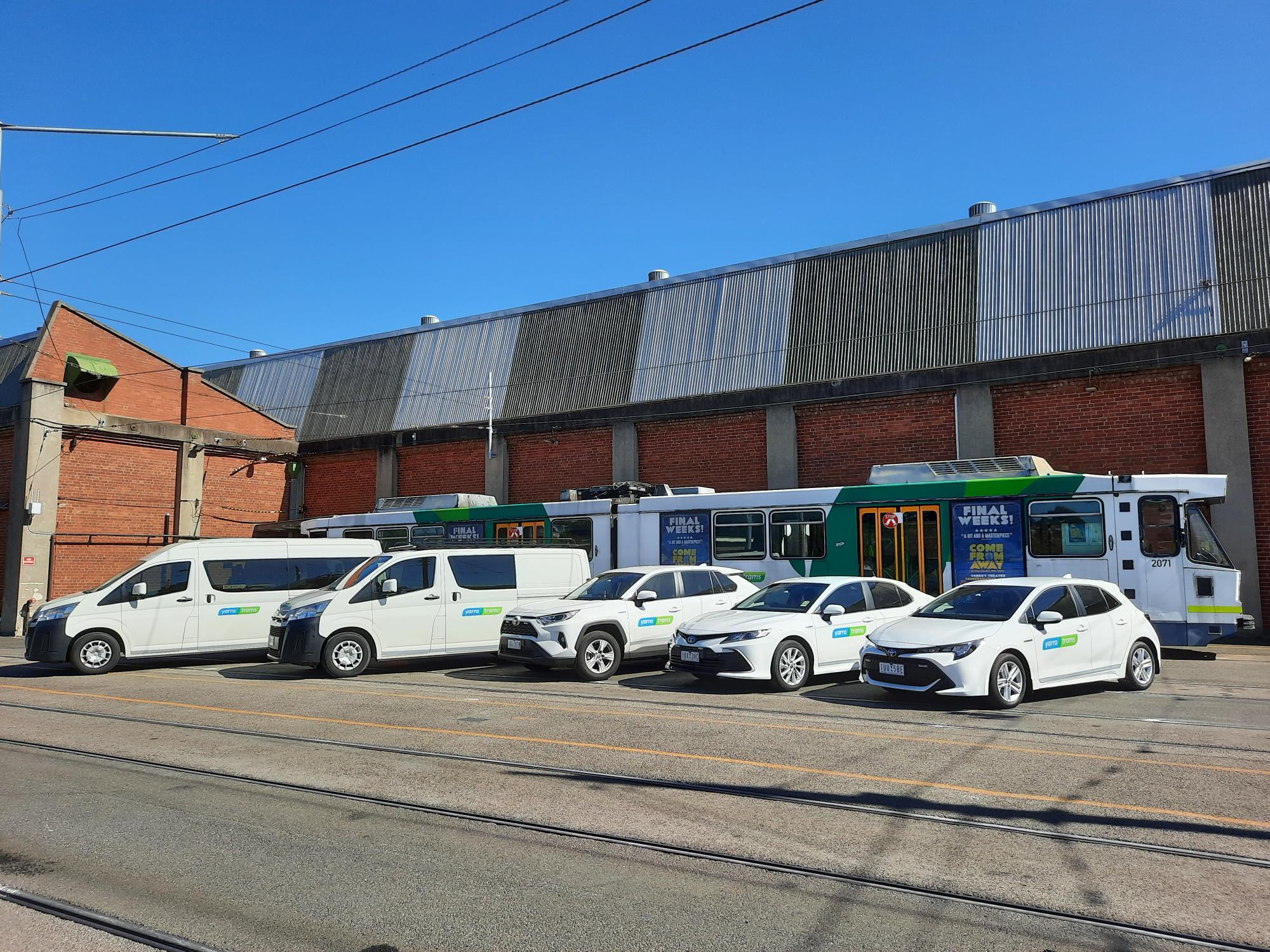
Yarra Trams committed to transitioning 100% of our passenger vehicles to hybrid by the end of 2022. The transition was completed ahead of schedule, with 100% of the hybrid vehicles arriving by May 2022.
We have developed a zero emissions vehicle (ZEV) transition plan and are preparing to trial ZEVs and charging infrastructure.
Adapting to climate change
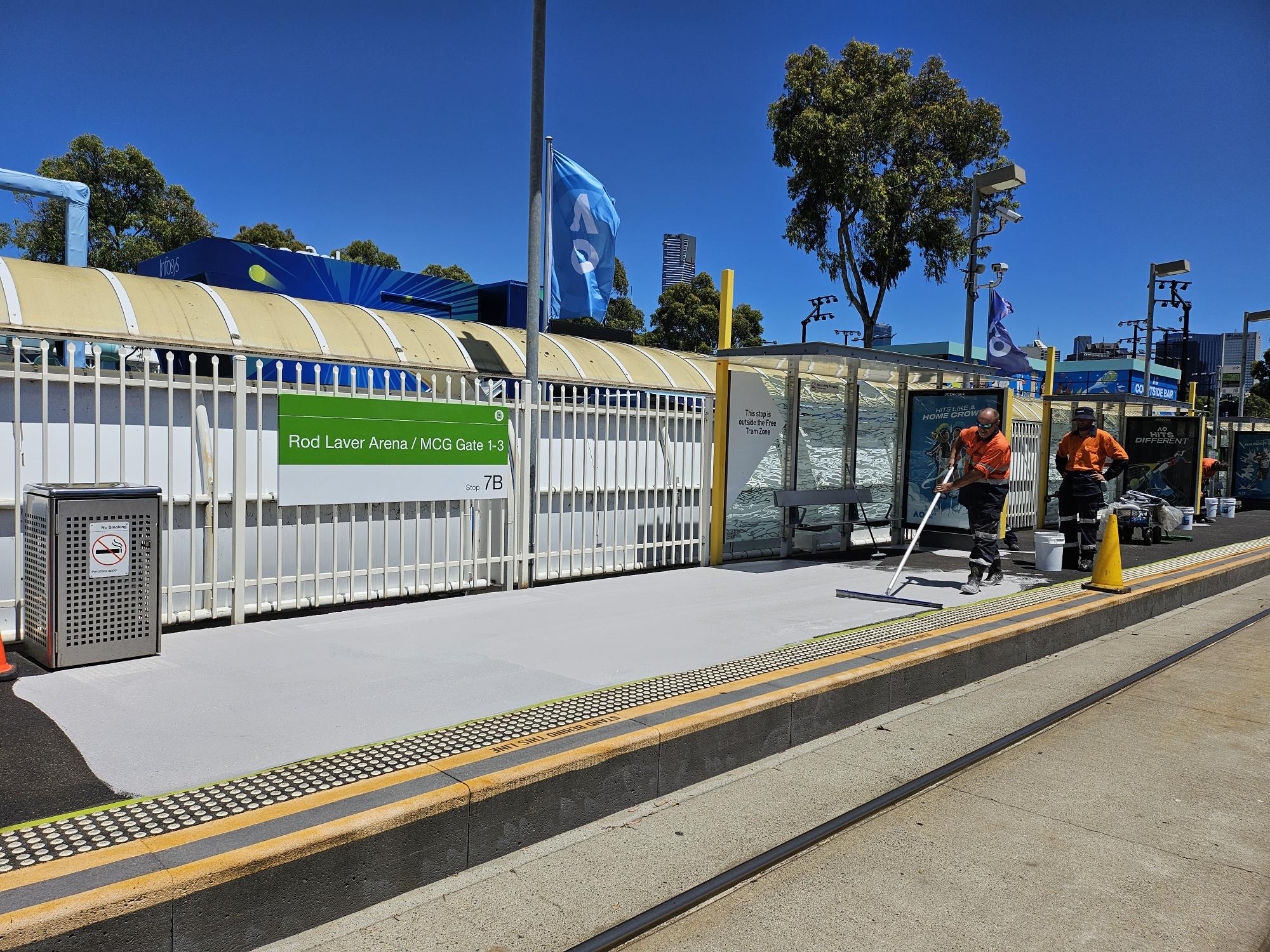
Climate change is already impacting Melbourne’s tram network. Longer and hotter summers pose risks to our passengers, employees, assets and operations. And we know that more changes in our climate will continue to present escalated challenges into the future.
At Yarra Trams we are adapting to climate change as part of our operational planning, and we have established a rigorous extreme weather plan to safely manage hotter and prolonged summer seasons.
We're preparing for higher temperatures and rainfall by installing modular IoT devices to better monitor problem areas for heat and flooding. Further, we're working to map heat data across our network and we're trialing cooling surface treatments at our tram stops to help adapt to the impacts of climate change.
Taking a long-term view, we are also implementing climate change mitigation initiatives to do our bit in reducing greenhouse gas emissions, aiding the State’s pledge for net zero emissions by 2050.
And by providing Melbourne with a sustainable transport option linked to renewable solar energy, we are proud to be supporting Melbourne more broadly in the fight against climate change.
Solar trams

Melbourne’s tram network is now 100 per cent linked to renewable energy thanks to two Victorian solar farms.
With the opening of the Numurkah Solar Farm, which generates approximately 255,000 megawatt hours of clean, renewable electricity, all trams on Melbourne’s iconic network are driving investment in renewables as part of the State Government’s Solar Trams Initiative.
This is part of a much larger picture for Melbourne, with the State Government’s leading Climate Change Strategy committing Victoria to net zero by 2050 and all government operations powered by 100% renewable electricity by 2025.
Recycled First

Yarra Trams is working to increase the amount of recycled and re-used content used across the network in response to the Victorian Recycled First Policy.
By re-using products or buying products with recycled content this reduces the amount of virgin materials we use, gives products and materials a second life and contributes to making a more circular economy.
Recycled materials are being used across the network, including recycled glass for separation kerbing and recycled concrete, asphalt, and plastic in products used for maintenance and renewal works. We’re also trialing signage made from recycled textiles as a potential alternative to the plastic signs typically used during disruptions and major events
Uniform recycling
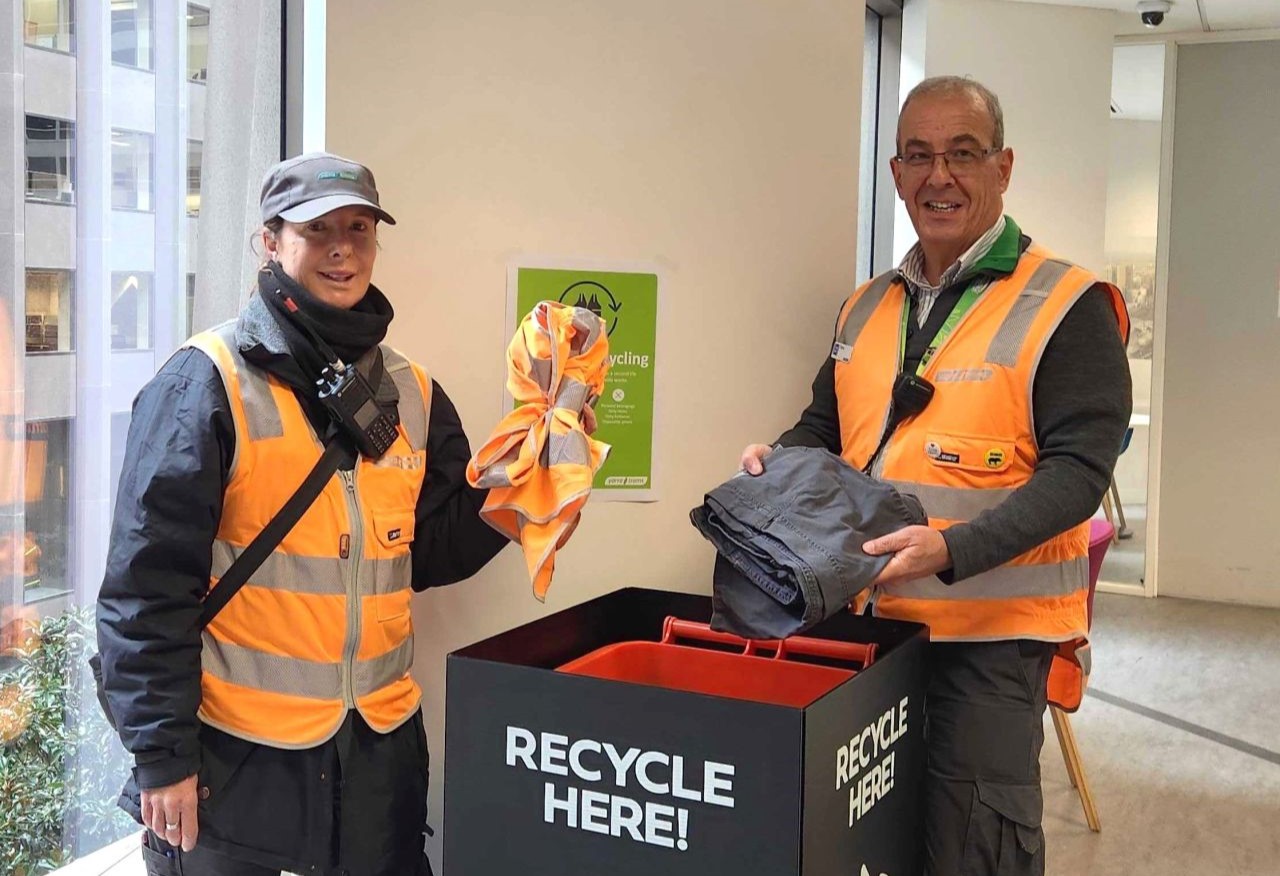
Yarra Trams has introduced uniform recycling to save old workwear from landfill, helping to reduce our environmental footprint and delivering on our commitment to sustainability.
Working with Victorian-based social enterprise UPPAREL, Yarra Trams uniforms will be transformed into products to be re-used by a range of industries including construction, furniture and fashion, rather than ending up as waste.